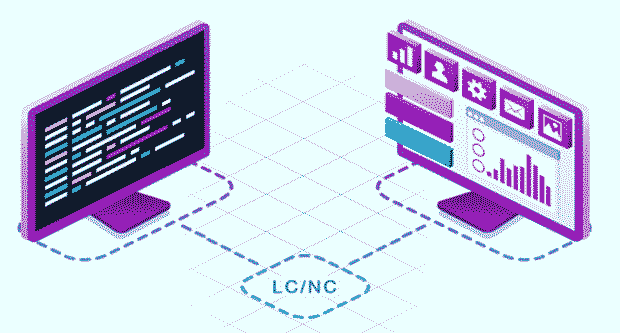Question: Can someone give me the understanding of rise of no-code and low-code development platforms?
The web development industry has witnessed a paradigm shift with the emergence of no-code and low-code development platforms. These platforms empower non-developers to create websites and applications with minimal coding knowledge, democratizing the process of software development. This article explores the growing trend of no-code and low-code platforms, their advantages, potential challenges, and their impact on the web development industry.
Understanding No-Code and Low-Code Development Platforms
What are No-Code Platforms?
No-code development platforms are tools that allow users to build software applications without writing any code. These platforms provide a visual interface where users can drag and drop elements to create functional applications. No-code platforms are designed for individuals with little to no programming experience, making web and app development accessible to a broader audience.
What are Low-Code Platforms?
Low-code development platforms, on the other hand, require some level of coding but significantly reduce the amount of manual coding needed. These platforms offer visual development tools combined with pre-built templates and components, enabling developers to create applications faster and more efficiently. Low-code platforms are suitable for both professional developers and those with limited coding knowledge.
The Growing Popularity of No-Code and Low-Code Platforms
Democratization of Web Development
One of the primary drivers behind the rise of no-code and low-code platforms is the democratization of web development. These platforms empower non-developers, such as business owners, marketers, and designers, to create and deploy applications without relying on professional developers. This democratization has opened up new opportunities for innovation and entrepreneurship, allowing individuals to turn their ideas into reality quickly and cost-effectively.
Accelerated Development Process
No-code and low-code platforms significantly accelerate the development process. Traditional software development involves extensive coding, testing, and debugging, which can be time-consuming. In contrast, no-code and low-code platforms streamline these processes by providing pre-built components and automated workflows. This allows users to develop and deploy applications in a fraction of the time it would take using traditional methods.
Cost Efficiency
Building custom software applications can be expensive, especially for small businesses and startups. Hiring professional developers, purchasing development tools, and maintaining infrastructure can strain budgets. No-code and low-code platforms offer a cost-effective alternative by reducing the need for extensive coding and development resources. This cost efficiency makes it feasible for businesses of all sizes to create and deploy applications without breaking the bank.
Bridging the Skills Gap
The tech industry faces a persistent skills gap, with a shortage of qualified developers to meet the growing demand for software applications. No-code and low-code platforms help bridge this gap by enabling individuals with non-technical backgrounds to participate in the development process. This not only alleviates the pressure on professional developers but also fosters collaboration between technical and non-technical teams.
Impact on the Web Development Industry
Changing Roles of Developers
The rise of no-code and low-code platforms has prompted a shift in the roles and responsibilities of developers. Instead of focusing solely on writing code, developers are now increasingly involved in designing, integrating, and customizing applications using these platforms. This shift allows developers to work more efficiently, tackle complex projects, and focus on tasks that require advanced coding skills.
Increased Innovation and Prototyping
No-code and low-code platforms facilitate rapid prototyping and experimentation. Businesses can quickly create and test new ideas without significant investment in time and resources. This fosters a culture of innovation, enabling companies to adapt to market changes and customer needs more effectively. The ability to iterate and refine applications quickly gives businesses a competitive edge in today’s fast-paced digital landscape.
Empowering Citizen Developers
Citizen developers, or non-professional developers, have become a significant force in the web development industry. No-code and low-code platforms empower these individuals to create functional applications that meet their specific needs. This empowerment extends beyond traditional IT departments, allowing departments such as marketing, HR, and finance to develop custom solutions tailored to their workflows. As a result, businesses can operate more efficiently and respond to challenges with agility.
Enhanced Collaboration
No-code and low-code platforms promote collaboration between technical and non-technical teams. These platforms provide a common ground where stakeholders from different departments can work together on application development projects. This collaborative approach ensures that applications are designed to meet the needs of all users, resulting in more effective and user-friendly solutions.
Advantages of No-Code and Low-Code Platforms
Accessibility
No-code and low-code platforms make web and app development accessible to a broader audience. Individuals without coding expertise can create functional applications, reducing the barrier to entry for software development. This accessibility fosters inclusivity and diversity in the tech industry, allowing more people to contribute to innovation and problem-solving.
Flexibility and Customization
While no-code platforms offer pre-built templates and components, they also provide customization options to tailor applications to specific requirements. Low-code platforms, in particular, offer greater flexibility, allowing users to add custom code when needed. This combination of pre-built elements and customization ensures that applications can be tailored to meet unique business needs.
Speed and Efficiency
No-code and low-code platforms streamline the development process, enabling users to create and deploy applications quickly. Automated workflows, visual development interfaces, and pre-built components eliminate the need for extensive manual coding. This speed and efficiency allow businesses to respond to market demands and customer needs more rapidly.
Cost Savings
By reducing the need for extensive coding and development resources, no-code and low-code platforms offer significant cost savings. Businesses can develop applications in-house without hiring professional developers or investing in expensive development tools. This cost efficiency makes it feasible for small businesses and startups to create and deploy applications without compromising quality.
Potential Challenges and Considerations
Scalability and Complexity
While no-code and low-code platforms are ideal for simple applications, they may face limitations when it comes to scalability and handling complex projects. Businesses with advanced requirements may still need professional developers to create custom solutions that go beyond the capabilities of these platforms.
Security and Compliance
Security and compliance are critical considerations in web and app development. No-code and low-code platforms must adhere to industry standards and best practices to ensure data security and regulatory compliance. Businesses should evaluate the security features and compliance capabilities of these platforms before adoption.
Integration with Existing Systems
Integrating no-code and low-code applications with existing systems and databases can be challenging. Compatibility issues and data synchronization problems may arise, requiring technical expertise to resolve. Businesses should assess the integration capabilities of these platforms to ensure seamless connectivity with their existing infrastructure.
Quality Control
Ensuring the quality and performance of applications developed using no-code and low-code platforms can be challenging. Thorough testing and quality assurance processes are essential to identify and address potential issues. Businesses should implement robust testing protocols to maintain the reliability and performance of their applications.
Conclusion
The rise of no-code and low-code development platforms is transforming the web development landscape. These platforms democratize web and app development, making it accessible to a broader audience and fostering innovation. By accelerating the development process, reducing costs, and bridging the skills gap, no-code and low-code platforms empower businesses to create and deploy applications quickly and efficiently.
While these platforms offer numerous advantages, they also come with potential challenges related to scalability, security, integration, and quality control. Businesses should carefully evaluate these considerations to make informed decisions about adopting no-code and low-code platforms.
As the web development industry continues to evolve, no-code and low-code platforms will play an increasingly important role in driving digital transformation and enabling businesses to stay competitive in a rapidly changing market.



